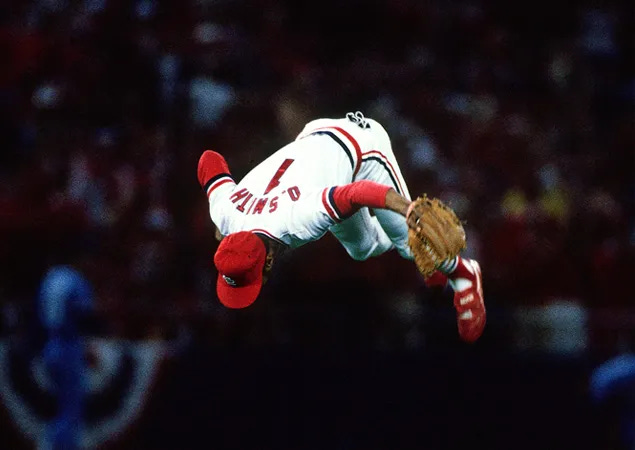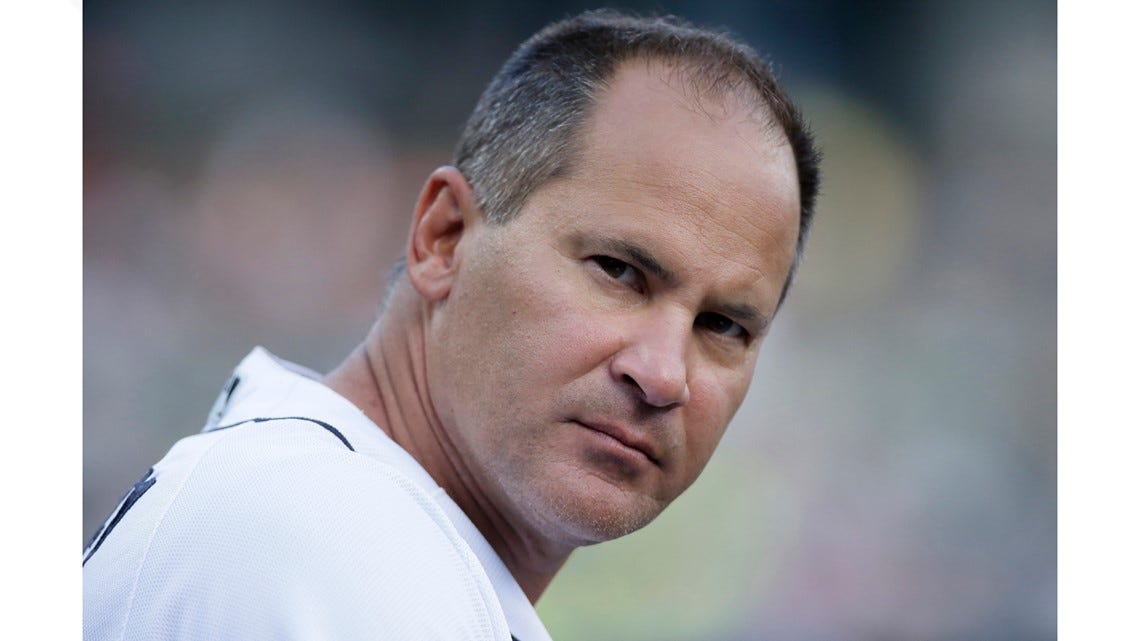Omar is a Failed Comparison
Why Omar Vizquel is not comparable to Ozzie Smith and Luis Aparicio
I rarely saw Omar Vizquel play, a sad admission from a Cleveland baseball fan. I remember getting Omar Vizquel’s autograph in 2002 on a trip to Toronto (on one of the times I got to traverse the country with my father for work), which was the first time I received an autograph at a baseball field. I remember fans and family members talking about how great Omar was defensively and seeing glorious pictures of him making amazing barehanded plays. But witnessing him personally? Nope, by the time I seriously watched baseball Omar was past his Gold Glove winning days riding out his contract in San Francisco and for many years after a fine utility infielder for the White Sox, Rangers and Blue Jays.
But Omar’s Baseball-Reference page lights up with awards: he won 11 Gold Gloves at shortstop, second only to Ozzie Smith (the Wizard himself) and more than his hero Luis Aparicio. Defensively, Vizquel was a marvel and while I never saw him personally, apparently quite fun to watch. You can still find his highlight reels on Youtube including the one which put him on the map in Seattle.
But here’s the thing, I did not witness Omar’s defense and with all due respect to those who did: I am skeptical Omar Vizquel deserved all of those Gold Gloves.
The Sad Math on Vizquel’s Defense
We cannot calculate defensive metrics like offensive ones and, as I wrote in Hunter’s write up: I am skeptical we know the full story defensively. Every year we learn more, we can now calculate how many runs a catcher provides based on pitch framing (something we never could before), and we’re getting better at determining how many players players make (including how many players a fielder can take from other fielders). We clearly know a lot, if not all, about it.
But things simply do not add up with Vizquel who holds many longevity records at shortstop, but few qualitative. The most famous one is fielding percentage (where Vizquel stands alone), but fielding percentage is a poor fielding metric which fails to capture the full story defensively. If we break it down to a yearly level:
Vizquel only once led the league in range factor; and only finished in the top 10 four other times at shortstop
Vizquel holds the record for most double plays turned at shortstop: but only led the league once
Vizquel never led the league in assists at shortstop
Vizquel only led the league in putouts once at shortstop
Vizquel did lead the league in fielding percentage six times at shortstop, but that’s still five less than the 11 Gold Gloves he won
That’s some basic level math, and while it could be easy to dismiss if we consider Ozzie Smith the story is the opposite:
Smith led the league in Range Factor six times (and finished second four other times)
Smith led the league in double plays turned at shortstop five times
Smith led the league in assists eight times
Smith led the league in putouts twice
While Smith’s career fielding percentage is less: he led the league in fielding percentage eight times
Which then brings me to the advanced part of this equation: Baseball-Reference reckons Ozzie Smith was worth 239 runs with his glove, the second most ever at shortstop (2 runs behind Mark Belanger). Omar Vizquel only 129 (over a much longer career: Omar was on the field over 1,000 more innings than Ozzie). That’s a huge difference, and one that is not reflected in his Gold Glove count.
Now, Ozzie Smith is the best defensive shortstop ever, there’s no shame in not being Ozzie Smith. But Omar is not the second best defensive shortstop, or the third, or even the fifth or sixth. He’s probably closer to the 10th, or the 11th, best defensive shortstop ever. Which, again, is incredibly good! Omar Vizquel was one heck of a player, and his glove was good enough that teams played him when he was 45 despite being one of the absolute worst hitters in baseball history. Omar Vizquel received the 22nd most plate appearances in baseball history! Basically every player in the top 40 is in the Hall of Fame, the non-eligible exceptions are (by order of plate appearances:
Barry Bonds
Alex Rodriguez
Rusty Staub
That’s a pretty darn good list. Omar Vizquel is also, quite easily, the worst hitter in the top 40 all time.
Omar Vizquel’s Anemic Offense
Many Cleveland fans remember Omar as serviceable with the bat, and in their defense: Omar was better with the bat in Cleveland than everywhere else, and he occasionally became a decent to good hitter in Cleveland. But let’s be real here: Omar was, for his career, an awful hitter. For his career Vizquel’s OPS+ is only 83, which means he was on average 17% worse than your average hitter. Vizquel never finished in the top 10 in any major offensive category (defining as: batting average, on-base percentage, slugging percentage, OPS, doubles, hits, home runs, RBIs and runs scored) although he did lead the league in sacrifice hits four times. Baseball-Reference reckons Vizquel cost his team nearly 250 runs over his long career; over 100 more runs than he saved with his glove.
How bad was Omar offensively? By OPS+ he would be the worst offensive player in the Hall of Fame; only Rabbit Maranville matches him. Many supporters of Omar point to his high hit total, but as explained above, this is almost entirely a function of his longevity. The fact Omar Vizquel ranks 22nd all time in plate appearances and did not reach 3,000 hits (he fell about 150 hits short) is notable. Omar would have needed to get a hit less than 25% of his plate appearances (which, to be fair, is not the same as batting average) in order to get there. That’s basically Edgar Renteria level of offense (if you’re wondering who Edgar Renteria is: that’s the point).
But, to be fair to Omar, we could compare him to the two players he most resembles: Ozzie Smith and Luis Aparicio. Here are their base statistics:
Omar Vizquel
.272/.336/.352 (OPS+ 82) in 12,013 PAs with 456 2B, 404 SB (71% success rate), 1,445 Runs Scored, 2,877 Hits
Luis Aparicio
.262/.311/.343 (OPS+ 82) in 11,231 PAs with 394 2B, 506 SB (79% success rate), 1,335 Runs Scored, 2,677 Hits
Ozzie Smith
.262/.337/.328 (OPS+ 87) in 10,778 PAs with 402 2B, 580 SB (80% success rate), 1,257 Runs Scored, 2,460 Hits
OK, so we see that Omar’s career counting statistics are superficially close to both Aparicio and Smith, but how Vizquel got there is instrumental. Omar has nearly 1,000 more plate appearances than Aparicio and 1,200 more than Smith: Omar kept playing into his 40s where both Aparicio and Smith stopped. On the surface, Omar resembles Aparicio…but only superficially. I would draw people’s attention to the stolen base statistics: both Smith and Aparicio swiped more bases than Vizquel, but more importantly, they also were caught less often. This is huge: Aparicio was not just a superb defensive shortstop he was also among the best baserunners of all time who led the league in stolen bases nine times. Omar finished in the top 10 six times, never higher than 2nd, but was caught a lot in the process.
How much was that worth? Baseball-Reference reckons Aparicio and Smith were worth over 100 runs to their team on the base paths…Vizquel was basically net even. If we combine this with their general hitting stats: and Omar simply no longer looks as good.
Struggling to Find a Rationale to Support Omar
For me, no matter how you slice it, Omar simply comes off as a poor choice for induction. The evidence, in my view, supports the notion that Omar was not quite as good defensively as his reputation suggests. Some think Omar probably only deserved a handful of Gold Gloves in his career. Omar’s bat was not just bad: it’s nearly historically atrocious; the only player best I can tell who was worse offensively than Omar to receive significant playing time was Mark Belanger, who won nine Gold Gloves himself and statistically is the best defensive shortstop in baseball history (yes, even better than Ozzie Smith).
The one place where Omar does shine is bunting. As stated above he led the league in sacrifice hits four times, and overall few were as successful at bunting for hits or sacrifice as Omar over the course of his career. In fact, Omar may be the best bunter in baseball history (given the information available to us)...the problem is bunts only account for about 500 of his 12,000 plate appearances, less than 5% of the total.
The rub is: if Omar was not as good as his 11 Gold Gloves suggest (and I think he wasn’t), and he was worse overall offensively than his supposed defensive peers (which I think is beyond dispute): then how can you support him entering the Hall of Fame? Before a few years ago I think Omar would have gotten in anyway, because he was viewed as an all around good guy and a credit to the game. I can no longer say that with a straight face.
Omar was accused of battering his wife and taking advantage of an autistic bat boy who worked for him as a manager in the minors. You can read the details about the bat boy case here, and the wife case here. I am not going to delve into it, I leave the reader to make their own judgments on the merits of each case.
A Sad State of Affairs
Omar brought a lot of joy to many with his play over many years. By all accounts he was an excellent player who’s glove allowed him to come to the plate more often than basically every player from the ‘90s Cleveland teams. He compiled a ton of hits, and dazzled everyone with his defense. While this does not come out to be as valuable as many thought; it may have been worthy of the Hall in the eyes of BBWAA voters given a sterling personal reputation.
Without it, Omar likely won't enter the Hall. I could see a Veteran’s Committee revisiting Omar after his time on the ballot expires, but it may take a while. For me personally I feel terrible for his ex-wife, and the bat boy from Birmingham (who’s name I do not believe was released).
-Benjamin, J




